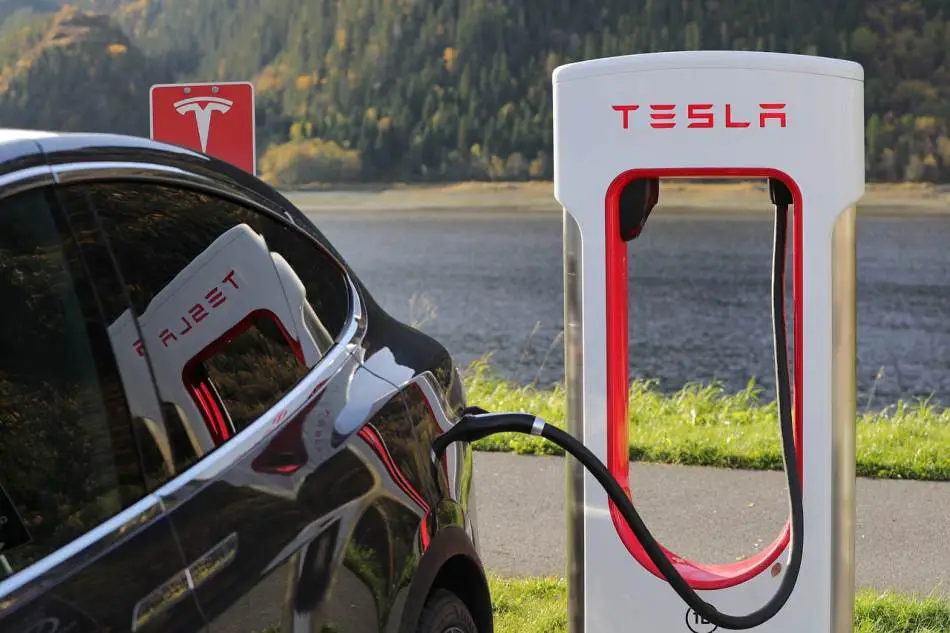
If you were in the market for a Tesla, you may be wondering if it has a handbrake that you can engage once you are parked. If you are parked on a slope and you want to ensure that the car doesn’t move, using just the parking mode is not going to prevent this from happening.
Does the Tesla Model 3 have a handbrake? The Tesla Model 3 does not have a handbrake. It does have an electronic brake called to the e-brake that can be engaged manually. Most people think that the parking brake is engaged automatically in a Tesla once the car is in park, but this is not so.
How do you set the parking brake in a Tesla?
To activate the parking brake in a Tesla, you need to use to your touch screen since this is where you’re going to verify if it has been correctly activated. Activation is a manual task. Here are the steps to follow:
- You need to locate the stalk on your steering wheel on the right side of the steering wheel.
- You will notice that there is a P indicated at the end of it.
- Make sure that you are in park and not moving before you proceed.
- Press the button at the end of the stalk and hold it in for 2 seconds.
- I recommend that you purchase the Junejour Steering Level Cover, click here for current pricing on Amazon.
- You will hear a clicking sound that indicates that you have engaged the parking brake.
- On the touchscreen you will notice a symbol that appears that has a red P in the middle of a red circle. This is an indication that you have engaged the parking brake.
Something that you need to be aware of is that there’s a difference in the sound when you are putting the car into park or engaging the parking brake. When you engage the parking brake, there’s a distinct sound difference that is more of a clicking sound. When you just put the car into park, the sound is more of a shifting sound indicating that the car is Park.
Here is a video showing how to engage the parking brake in a Tesla 3:
There is some confusion amongst Tesla owners whether the parking brake is the emergency brake on a Tesla. I will explain what the emergency brake is on a Tesla in the next section.
Does the Model 3 have an emergency brake?
Yes, the Tesla Model 3 does have an emergency brake. It is activated the same way you activate the parking brake on a Tesla. The major difference is that you will be in drive mode when you apply the e-brake.
Here is a video that shows an owner using the emergency brake in different scenarios. It is beneficial to watch this video so that you can see how the emergency brake brings the Tesla to a complete stop which is important if the brakes have failed. He also explains how one would use this emergency braking on a road that is downhill and that has a lot of turns:
In a gas-powered car you would just apply the emergency brake to slow down your car if you had a failure in your brakes. Since the handbrake does not exist in a Tesla, you would need to press in on the end of the steering wheel stalk which activates the electronic brake.
I recommend the Model 3 Screen Protector by SUMK, click here for current pricing on Amazon.
The electronic emergency brake causes the brake pads to press inwards quickly and with a lot of forth. An emergency brake is important in a Tesla because a Tesla has brake pads and brake fluid. The brakes can malfunction just as is possible with an ICE vehicle. If this were to happen, you would be able to safely slow down the Tesla with this braking feature.
If you were to be driving in area that has challenging terrain, such as on a winding road, using the e-brake must be done in a delicate fashion. If you try to slow down in a turn, you may slide. Simply press on the button for the emergency brake for just a few seconds to allow the Tesla to reduce its speed. When in more of a straightaway, apply the e-brake once again. Eventually, you will be able to come to a complete stop without endangering yourself.
Since there are many differences between gas-powered car and a Tesla, some people are wondering if Tesla has a normal brake pedal since it tends to use a lot of regenerative braking which slows down the vehicle.
Does the Tesla Model 3 have a brake pedal?
A Tesla has a brake pedal that looks the same as a brake pedal in a car that has an internal combustion engine. When you apply the brakes, the feeling that you will have is different in Tesla due to the use of regenerative braking. A Tesla uses regenerative braking to charge the battery while in motion. When you initially press the brake pedal, you’re not actually engaging the brake pads, you’re allowing the kinetic energy to be converted in energy that charges the main battery.
It is possible to drive long distances without ever having to apply the brakes in a Tesla because of the regenerative braking. When you release accelerator in a slightly downhill area, the forward force of the vehicle will help to charge the battery and slow down the vehicle at the same time. Just before you come to a complete stop, the brake pads will engage.
So, it is apparent that there is a braking system in a Tesla that can function the same way as in a powered car. However, because the brake pads are rarely used, the brake pads will last a lot longer than they would have in a normal car. The CEO of Tesla, Elon Musk, stated that you’ll may never have to replace your brake pads on a Tesla.
Once you have come to a stop, and you have put your car into park. At this point, you can engage the parking brake. What’s the difference between having the car in park and having the parking brake applied?
Tesla in Park vs Parking Brake
Many Tesla owners find it hard to understand the difference in having their cars in park versus having the parking brake engaged. When the parking brake is engaged, there’s a P with a red circle around it that appears on the touchscreen. Also, there’s an additional sound that’s more of a creaking sound that happens once you put your Tesla into this mode. I noticed that some owners believe that there’s absolutely no difference between these two modes, but I will explain what the difference is.
Once stopped, if you press on the button at the end of the stalk and quickly release it, you will put the car into park mode. The Tesla will not be able to move forward because the tires are locked, but it’s not as safe as putting the car in the emergency brake mode.
Try holding the button and at the end of the stalk in for more than 2 seconds. The parking brake will activate, which is also called the emergency brake.
Another difference between the park mode and the parking brake mode is the amount of force that is applied to the brake pads. Extra pressure is added onto brake pads when it is in the parking brake mode versus just the park mode.
My Model 3 parking brake does not release
If your Tesla warns you that the parking brake does not release, be prepared to make have servicing completed if you are not able to deal with the warning. It’s hard to determine if it’s mechanical or software problem on your own.
Some Tesla owners have been able to correct the problem on their own by moving the car back and forth slowly to release the brake pads that are stuck. However, in some cases you’re not able to move the car at all. When you are unable to unstick the brake pads, it might be time to call for service.
One explanation is that rust is built up after the brakes being exposed to a lot of rain. This will cause the brake pads to stick. This is something that only rarely happens; there’s usually another explanation for the stuck brake pads.
To illustrate the severity of this situation when the parking brake will not release, one owner was not able to move his car at all once the message that the parking brake would not release. He had to have a mobile tech come to his place. The car had to be towed, and the only way that it could be placed on the flatbed tow was to have it dragged far enough to strap it onto the flatbed.
Another owner stated that his parking brake seemed to stick after a certain software update had been placed on his Tesla. Nevertheless, I couldn’t find a lot of mentions of this update causing problems.
He ended up having to disconnect the negative lead for 10 seconds to get rid of the error message. Personally, I don’t think that this sort of extreme measure should be taken, unless it’s performed by a qualified technician.
Recent software updates correct a lot of problems that are happening with the Tesla braking brake, although there has been recalls initiated because of mechanical problems that cannot be corrected by a software change. One such problem was with the electric parking brake in the Model S and X, specifically ones that were manufactured between February and October of 2016.
There was a small gear malfunction that caused the problem with the electronic brake. I noticed in the reports from Tesla that people should not worry terribly about this problem because it does not cause any problems with emergency stops that were initiated using the e-brake while the car is moving.
